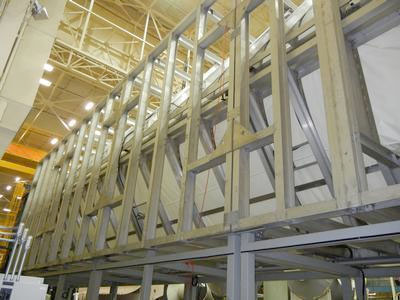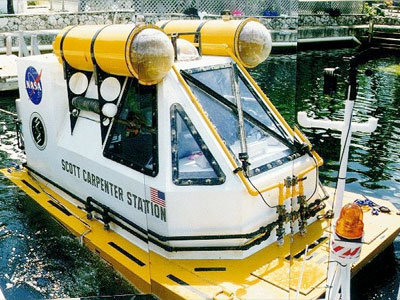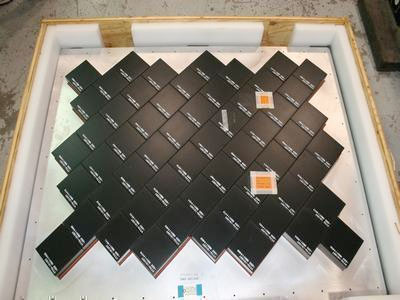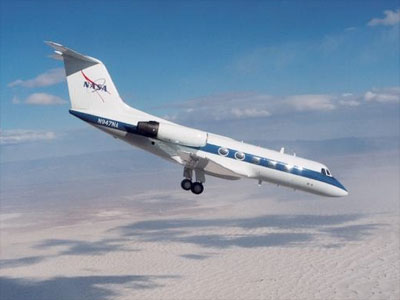|
|

|
|
Author
|
Topic: NASA/GSA: space shuttle artifact disposition
|
Robert Pearlman
Editor Posts: 50571
From: Houston, TX
Registered: Nov 1999
|
 posted 09-14-2009 12:00 PM
posted 09-14-2009 12:00 PM
   
NASA release NASA Announces Screening of Shuttle ArtifactsNASA is inviting eligible educational institutions, museums and other organizations to begin registering to screen potential space shuttle artifacts. The artifacts represent significant human spaceflight technologies, processes and accomplishments of the shuttle program. More information about the types of artifacts that may be available is included in a brochure, Space Shuttle Program Artifacts. To ensure broad access to potential shuttle artifacts, NASA partnered with the General Services Administration to provide a first of its kind, Web-based electronic artifacts prescreening capability. Only a few hundred items will be initially screened, but thousands of other items will be added periodically until all artifacts have been screened. Each artifact will be screened for 90 days. Once the screening period closes, requestors will be notified about the status of their request. Museum and school officials must first be determined as eligible through an online registration process or through the State Agency for Surplus Property in their state. Eligible recipients may view the available artifacts and request specific items at the Web site. Prescreening allows potential recipients to identify specific items and provides the time to plan to transport, preserve and properly display artifacts. Requesting an artifact through the prescreening process does not guarantee the item will be available or when it will become available. Artifacts will be incrementally released, as they are no longer needed by the Space Shuttle Program, and in accordance with export control laws and regulations. The artifacts are free. However, eligible recipients must cover shipping costs and any special handling fees. Shipping fees on smaller items will be relatively inexpensive, while larger items may involve extensive disassembly, preparation, shipping and reassembly costs. NASA will work closely with potential recipients, on a case by case basis, to address any unique special handling costs. |
Robert Pearlman
Editor Posts: 50571
From: Houston, TX
Registered: Nov 1999
|
 posted 01-19-2010 04:29 PM
posted 01-19-2010 04:29 PM
   
NASA release NASA Reveals New Batch Of Space Program ArtifactsNASA is inviting eligible education institutions, museums and other organizations to examine and request space program artifacts online. These items represent significant human space flight technologies, processes, and accomplishments from NASA's past and present space exploration programs. NASA partnered with the General Services Administration (GSA) to offer a first of its kind, web-based, electronic artifacts pre-screening capability last year. On October 1, 2009, the GSA launched a web initiative for screening and requesting NASA's space shuttle artifacts. The first round ended Nov. 30, and all 913 artifacts were allocated. A second Web-based screening opportunity begins on Tuesday. It includes approximately 2,500 potential artifacts from NASA programs that include the space shuttle, Hubble Telescope, Apollo, Mercury, and Gemini. Each artifact will be screened for 90 days. After the screening period closes, and at the completion of the allocation process, requestors will be notified about the status of their request. Museums and schools will be screened for eligibility through an online registration process or through their state agency for surplus property. Eligible recipients may view the available artifacts and request specific items at the website. Pre-screening allows potential recipients to identify specific items and provides the time to plan to transport, preserve and properly display artifacts. Requesting an artifact through the pre-screening process does not guarantee the item will be available. Nor does it provide a specific time when it will become available. Allocated artifacts will be incrementally released as they are no longer needed by NASA and in accordance with export control laws and regulations. Although the artifacts are provided without charge, eligible recipients must cover shipping and any special handling costs. Shipping fees on smaller items will be relatively inexpensive, while larger items may involve extensive disassembly, preparation, shipping and reassembly costs. NASA will work closely with potential recipients, on a case-by-case basis, to address any unique special handling costs. |
Robert Pearlman
Editor Posts: 50571
From: Houston, TX
Registered: Nov 1999
|
 posted 06-17-2011 05:16 PM
posted 06-17-2011 05:16 PM
   
NASA release NASA Reveals New Batch Of Space ArtifactsNASA is inviting eligible education institutions, museums and other organizations to examine and request space program artifacts online. These items represent significant human space flight technologies, processes, and accomplishments from NASA's past and present space exploration programs. On Wednesday, June 15, NASA posted a seventh batch of artifacts. The National Air and Space Museum, NASA visitor centers and exhibit managers, other federal agencies, eligible education and non-profit institutions, public museums, libraries and planetariums can view and request space artifacts. This opportunity is being offered through NASA's partnership with the General Services Administration. Together they developed the first-of-its-kind Web-based, electronic viewing portal for space artifacts. 
Space shuttle payload bay mockup. Credit: NASA/GSAThese artifacts are from the Space Shuttle, Hubble Space Telescope, Apollo and International Space Station Programs. Examples of artifacts include a space shuttle payload bay mockup, cockpit seats and Apollo era glove assemblies. Each artifact will be available for 42 days. For the first 21 days, internal organizations such as NASA visitor centers, agency exhibit managers and the Smithsonian Institution may request artifacts. External organizations, including museums, schools, universities, libraries, and planetariums, may request artifacts the following 21 days. After the screening period closes, and at the completion of the request process, organizations will be notified about the status of their request. Artifacts will be incrementally released when they are no longer needed by NASA and in accordance with export control laws and regulations. The artifacts are offered free of charge, however, the requesting organizations must pay for shipping and any special handling costs. To date, approximately 28,500 items of historic space significance have been offered, mainly from the shuttle, with contributions from Hubble, Apollo, Mercury, Gemini and space station programs. Approximately 3,000 artifacts have been requested. |
Robert Pearlman
Editor Posts: 50571
From: Houston, TX
Registered: Nov 1999
|
 posted 08-15-2011 01:39 PM
posted 08-15-2011 01:39 PM
   
NASA release NASA Unveils New Batch Of Space Shuttle Program ArtifactsThe final space shuttle landing July 21 opened new prospects for eligible education institutions, museums and other organizations to receive a piece of spaceflight history. On Monday, Aug. 15, the eighth batch of artifacts from NASA's space programs will be available on a website that the agency and the General Services Administration (GSA) developed. The artifacts are not only from the shuttle era, but also from the Apollo, Mercury, and Hubble Telescope programs. The approximately 2,000 items include: 
Scott Carpenter Space Analog Station. Credit: NASA/GSA - the Scott Carpenter Space Analog Station, an underwater habitat that was used to demonstrate space life support system ideas for use on space stations
- shuttle heat shield tiles used to test problems experienced during missions
- parts of Apollo and space shuttle era spacesuits, including hard upper torso garments to protect astronauts from extreme temperatures
Each artifact will be available for 42 days. For the first 21 days, internal organizations such as NASA visitor centers, agency exhibit managers and the Smithsonian Institution may request artifacts. External organizations, including museums, schools, universities, libraries, and planetariums may request artifacts during the following 21 days.
Shuttle heat shield tiles. Credit: NASA/GSAAfter the screening period and completion of the request process, organizations will be notified about the status of their application. Artifacts are released incrementally when NASA no longer needs them, in accordance with export control laws and regulations. They are provided free of charge, but requesting organizations must pay for shipping and any special handling costs. To date, approximately 29,000 items of historic significance have been offered, mainly from the shuttle, with contributions from the Hubble, Apollo, Mercury, Gemini, and International Space Station programs. Approximately 3,000 artifacts have been requested. The remainder will be considered for federal and state reuse and then offered to the general public for sale. In addition to the artifacts, NASA also is offering a Shuttle Training Aircraft (STA) through another GSA hosted web-based site. 
Shuttle Training Aircraft (STA). Credit: NASAThe STA is a modified Gulfstream II that allowed pilots to simulate orbiter landings under controlled conditions. Other STAs will be displayed at NASA's Johnson Space Center in Houston, Dryden Flight Research Center in California, and the U.S. Space and Rocket Center in Huntsville, Ala. See here for discussion of NASA's and GSA's shuttle artifact disposition process. | |
Contact Us | The Source for Space History & Artifacts
Copyright 2023 collectSPACE.com All rights reserved.

Ultimate Bulletin Board 5.47a
|
|

|
 advertisement advertisement

|















